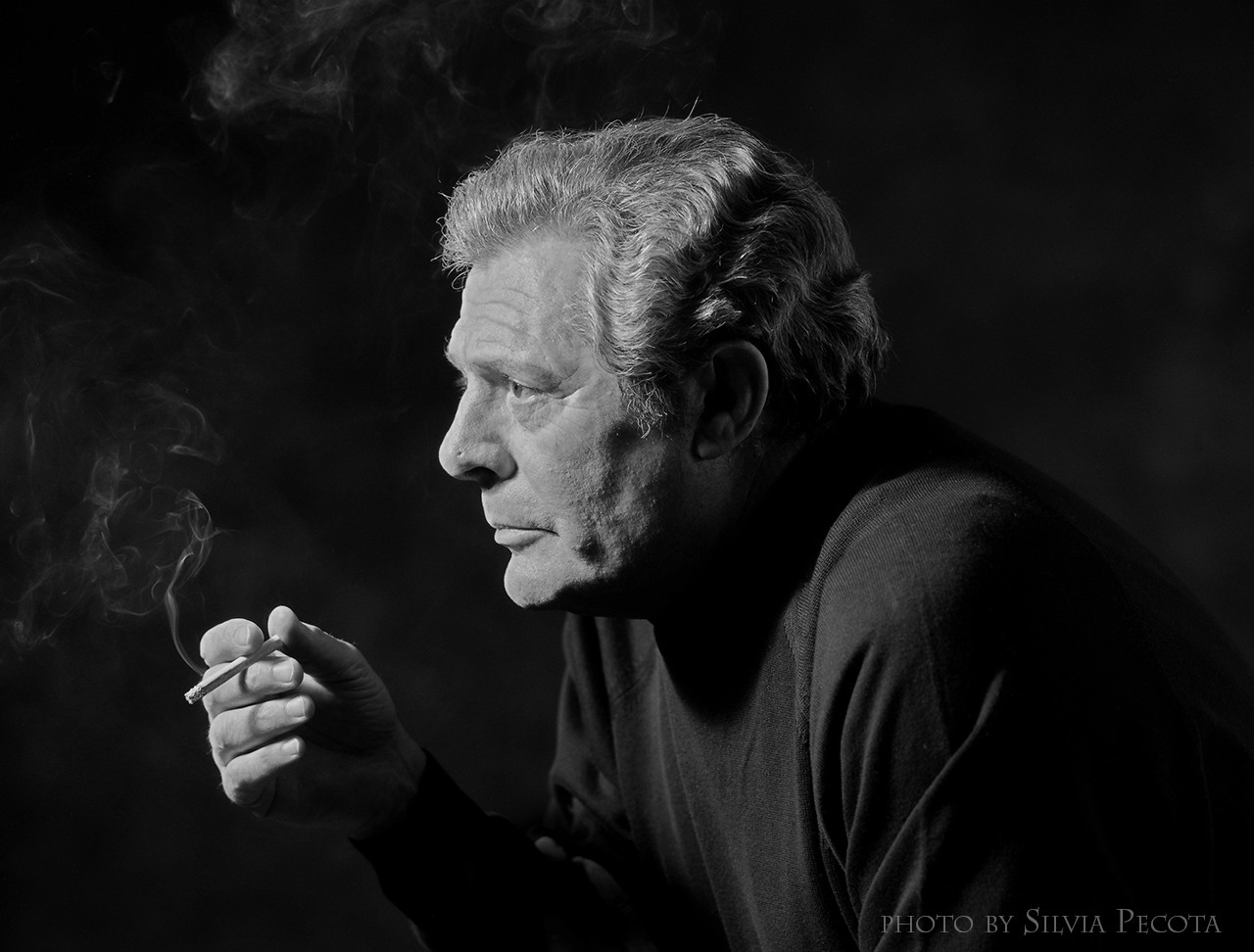
She has been a professional photographer for more than 30 years and has taken countless portrait photos: Inuit children, Canadian soldiers, professional athletes, models, celebrities like Mike Tyson, Marcello Mastroianni or Anthony Quinn, to name but a few. The Canadian artist Silvia Pecota tells us what this art is all about and why it has never been easy to just get stared.
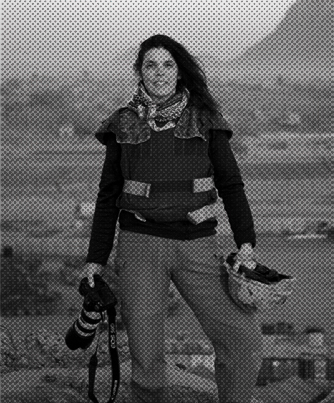
news aktuell: How did you get into photography? Was there a key experience?
Pecota: I was always interested in the arts as a child, and the career choice as a photographer was one of practicality for photography is instant and many job opportunities at the time. I initially went to College for Animation, but realized on a good day, I could accomplish only 2 seconds of work (lol). I initially intended to go into film, but branched off into photography in my second year at university. Photography also appealed to me because one is able to work solo. And then of course, I loved the process. At the time, to shoot film, develop it in the dark room and then print photos was “instant”.
news aktuell: What personal meaning does portrait photography have to you?
Pecota: Portrait photography for me has always been about capturing the beauty of the person. Even those less fortunate, I strived to represent the subject with dignity focusing on the individual’s strengths. My attraction to athletes is based on the classical definition of beauty, when back in Ancient Greece, beauty was actually defined by measurements. Hence, the beauty of the human form was an inspiration for creativity. What influenced my style is that of the Italian Renaissance. Light, composition, expression, colour….it is a time in art history that simply exudes beauty.
news aktuell: What goals do you pursue with your portrait photos?
Pecota: In portrait photography, I am always aiming to complement the features of the subject. Firstly, celebrity and corporate photography, is basically one that focuses on the complimentary. And similarly, those whom I photograph who are “less fortunate”, like the boxer training in gym in the poorer parts of town, who lives on hope and aspirations, or an Inuit child or Elder who have a tough life (when it comes to comforts and access to food and drinking water, heated homes etc….), their condition (which may be one of poverty), is not what I highlight. I try to focus on the resilience of their character. Their raw expression in the environment they live can tell such a story….and can be just as alluring (if not more) than any glamour setting.
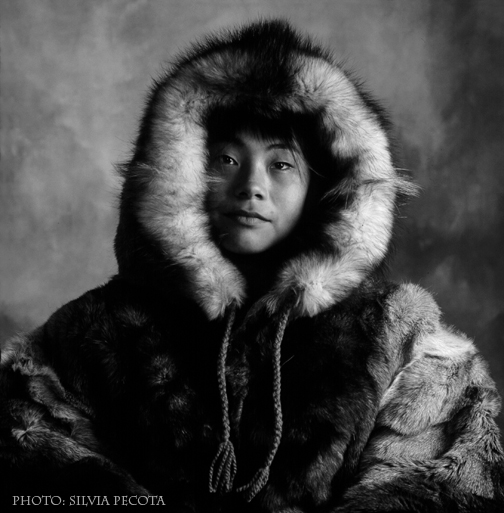
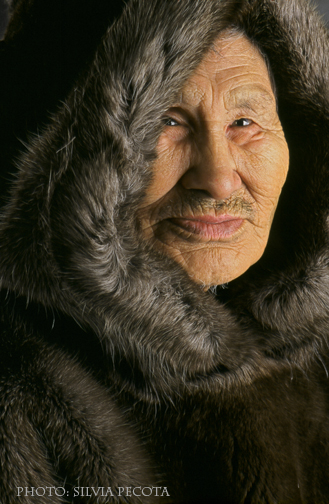
In such cases, it is important to understand the subject so as to feel the conditions of the environment. While studying at University in the 80’s, I began training at a boxing gym- this was before the sport became popular as an exercise and even before they had a woman’s washroom in some gyms. I wanted to understand the sport and those who trained in this environment; hence, I became part of the woodwork, so-to-speak. The boxers felt very much at ease so when they posed for me, they were very comfortable and relaxed, and a “connection” was made. And this allowed the “spirit” of the individual to come through. I also was very well respected because I always provided photographs for them so many were anxious to pose for me (and my school projects). Eventually I freelanced for a newspaper (The Toronto Sun) and would often feature portraits of the athletes. This established my reputation and more doors were open to me in terms of access to high profile athletes.
And when I started photographing up in the Canadian Arctic, it was due to having organized hockey drives for communities. This opportunity established trust and consequently, I was able to enter their “world”. What is important, and this was mentioned to me later, is that I “brought up to these communities more than I took away”. It is one’s reputation that opens such doors to opportunities.
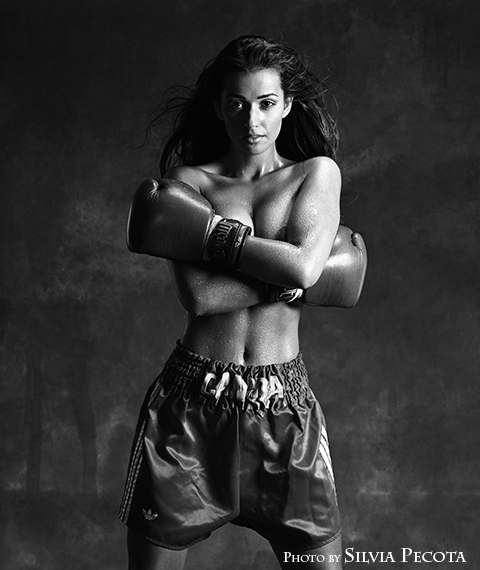
Similarly with the Canadian Military; I actually participated in boot camp for 2 weeks. Eventually I was able to travel to Afghanistan and be embedded with the Canadian Forces on 5 sperate occasions between 2006-2013. I also went on exercise with them in Canada, sleeping in the tents during frigid winters (in the -20’s celsius) and basically living under the same conditions. I always strove to “touch” the soul, ie recreate the “feeling” they went through. Furthermore, I never expected any extra privileges. Eating and sleeping under the same conditions. As a result, I earned their respect and trust.

news aktuell: How would you describe your personal signature in your photography?
Pecota: I believe it is my lighting that defines my work. A Rembrandt/Caravaggio style of dramatic lighting.
news aktuell: You have already portrayed a lot of people - including many celebrities who are probably "camera-tested". What are the special challenges with celebrity portraits?
Pecota: The challenge with celebrities and high-profile athletes is the limited time you get with them. I recall driving 10+ hours to Washington DC to get 2 minutes with Sugar Ray Leonard. There is no opportunity for mistakes. One has to be ready. It is very stressful. Back in the day it was film and polaroids were used to test the lighting. So ideally I would have an assistant to pose as well as help with the lighting set up. I always brought lighting equipment which was bulky and heavy. One has to be prepared for backup in case of potential glitch with the equipment. Potential issues with power cords, slave for the flash, and with transparency film, there was only 1/3 of a stop of forgiveness. So one needed to know precisely the accuracy of f/stops and speed. A lot of work and pressure for 2 minutes…sometimes even less.
news aktuell: Photographing people requires a lot of empathy. Especially when it's people who haven't been in front of the camera often, because with them there's a danger of being tense and cramped in front of the lens. What are your personal "techniques" for getting people in front of the camera the way you would like them to be?
Pecota: Absolutely it is important that the subject feels comfortable. Ideally there is time to talk to them, tap into a common interest, discuss wardrobe, show examples of poses from reference material. Then I warm them up and discover an expression that best suits them and then try to replicate a pose that works with slight variations. Hands are also most important to consider and where to place them. So it’s the eyes and the hands that I am primarily focused on. Athletes are the easiest to pose as they are most comfortable and confident with their bodies. When it is a portrait of a woman I try to always have a hair and makeup artist available. It makes all the difference.
news aktuell: You also offer so-called "artistic portraits" - i.e. portraits that are artistically alienated on the basis of a photo portrait (via Photoshop). What are the special challenges for you in the production and creation of these works of art?
Pecota: I was able to pick up photoshop fairly easily because of my art background. Once one knows the basics of photoshop, the opportunities are endless. The magic is how to blend all the elements in the composition seamlessly. The key is to keep the layers/elements consistent in terms of perspective (achieved with the lens and height of the camera) as well as the lighting. I use a WACOM screen with a pen that acts as a brush, painting digitally to “mesh” all the layers/elements by adding highlights and shadows and details like grass or fog, strands of hair or ribbon blowing (for example).

news aktuell: What mistakes do beginners always like to make with portrait photos?
Pecota: I’m not sure, but the key is lighting. Best to look up reference images and try to emulate the feel of images/compositions that most suit the photographer’s taste. And of course, practise and experimenting and understanding the technical aspects of photography.
news aktuell: What camera equipment would you recommend for beginners?
Pecota: For a beginner, any camera that one can afford – even one that is used so it is less expensive but offers the manual mode. Best not to invest too much money in the beginning. Experiment with a cheap camera and then one starts to understand the functions and this way make the best decision for the camera they will eventually want to purchase. What is key is a long portrait lens (at least a 105mm lens)…that is my style. It will blur out the background as well as being the most complementary for the face.
news aktuell: What should one consider in terms of lighting?
Pecota: Lighting is key…that is actually the origin of the word translated from Greek “Photo” = light “Graphia” = drawing. Exposure is important, granted with the digital era it is more forgiving than when it was about film exposure and film processing. I love dramatic lighting, so having a key light is “key”. If one has limited access to lights, then reflectors, even a white Styrofoam board can be used by window light. Keep it simple at the beginning (using 1 primary source of light) until one has the feel for where to place the light and how that light works on the face/subject. So the angle of the face is most important and must work with the lighting. Light and pose have a symbiotic relationship.
Also important is to consider the background. Keeping it simple is best. Consider the colour of the background and as such, select the wardrobe that best complements the composition.
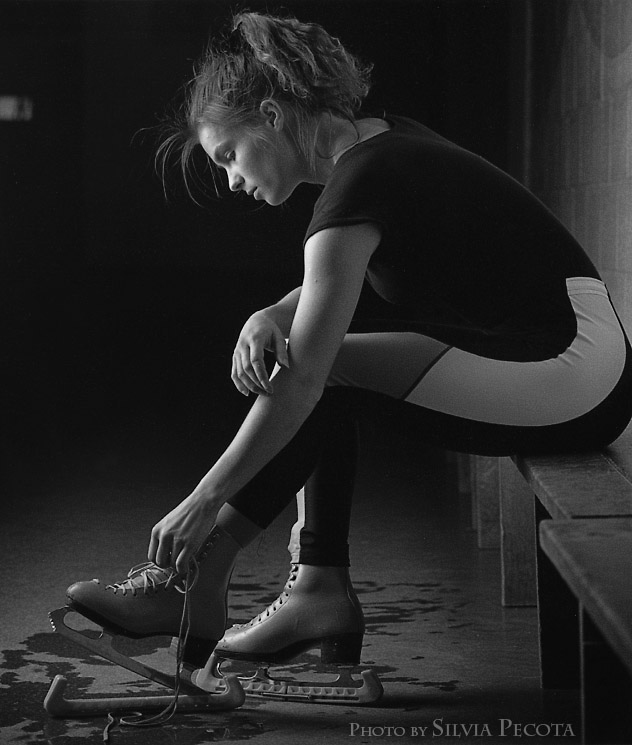
news aktuell: Do you recommend the rule of thirds?
Pecota: Rules are good, and you need to learn and understand them…then rules can be broken intelligently. But symmetry can also be most effective and powerful. It’s all about how one wants to control the eye of the viewer. Colour and shadows and highlights and shapes and patterns lead the viewer’s eye to the point of interest. That is what needs to be established. The rule of thirds is a good building block to start off with.
news aktuell: Which kind of lenses do you prefer?
Pecota: I personally like long lenses. Portrait lens is usually referred to as 105mm. The longer the lens, the more out of focus the background can be. The aperture and shutter speed are key. Best to experiment and see the results under different lighting conditions.
I often like to blur out the background. This eliminates distraction and the viewer is focusing on the subject. So the longer the lens the better. But a tripod may be necessary as handholding a long lens can be challenging especially under low lighting conditions and the speed is 1/125 or 1/60 or less.
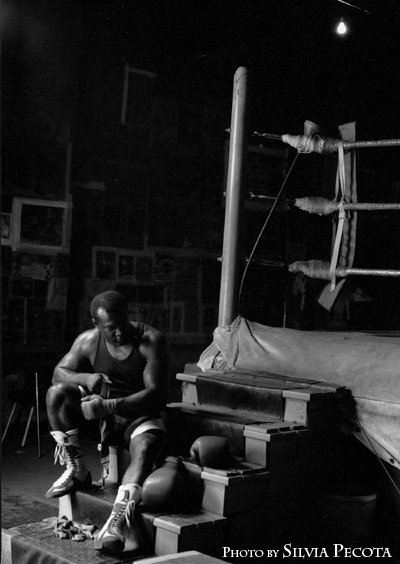
news aktuell: Which perspective has which effect? And is there a perspective that never works?
Pecota: I basically always shoot from a low perspective. My camera may be just a couple feet off the ground and on a tripod. Regarding what works and doesn’t, it all depends on the style of the photographer. Experimenting with a digital camera costs nothing. Back in the day, every roll of film of 36 shots was about $25.00….and that was 30 years ago. So no excuse to not experiment and find one’s signature style.
news aktuell: Digital photography offers countless possibilities for post-processing. Which "improvements" do you think make sense?
Pecota: Post processing is so much more forgiving from the days of film. With digital it is easy to adjust exposure and colour and even sharpness within seconds. Ideally the shot is perfectly exposed, but best avoid over exposure as there is no detail when it is whited out. Underexposure still allows flexibility in correction. But it could also cause grain. Under stressful situations, to be safe, bracket. That is what I did at times when shooting with film. But the situation is far easier now, as one can see the image on the camera immediately once shot. Back in the day, polaroid was most popular and necessary.
Interview: Beatrix Ta